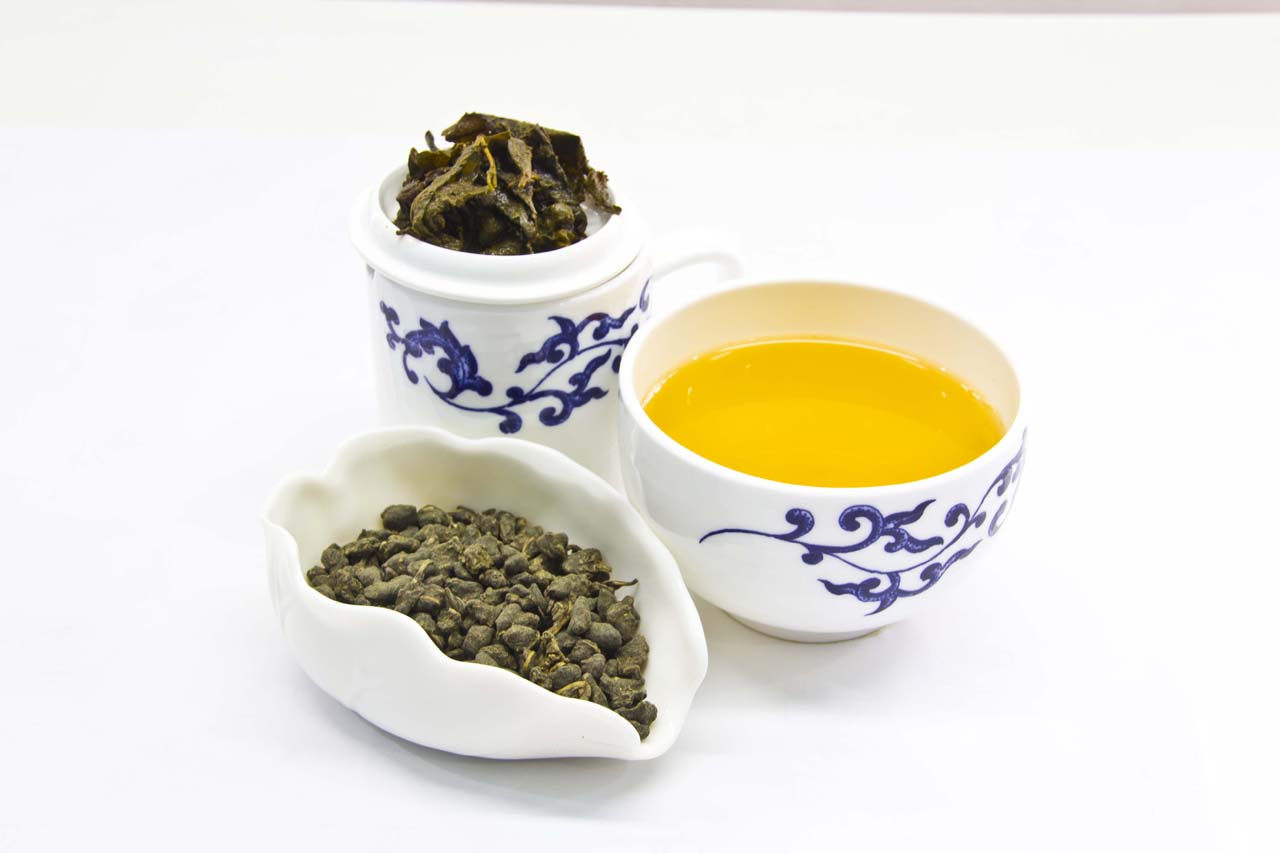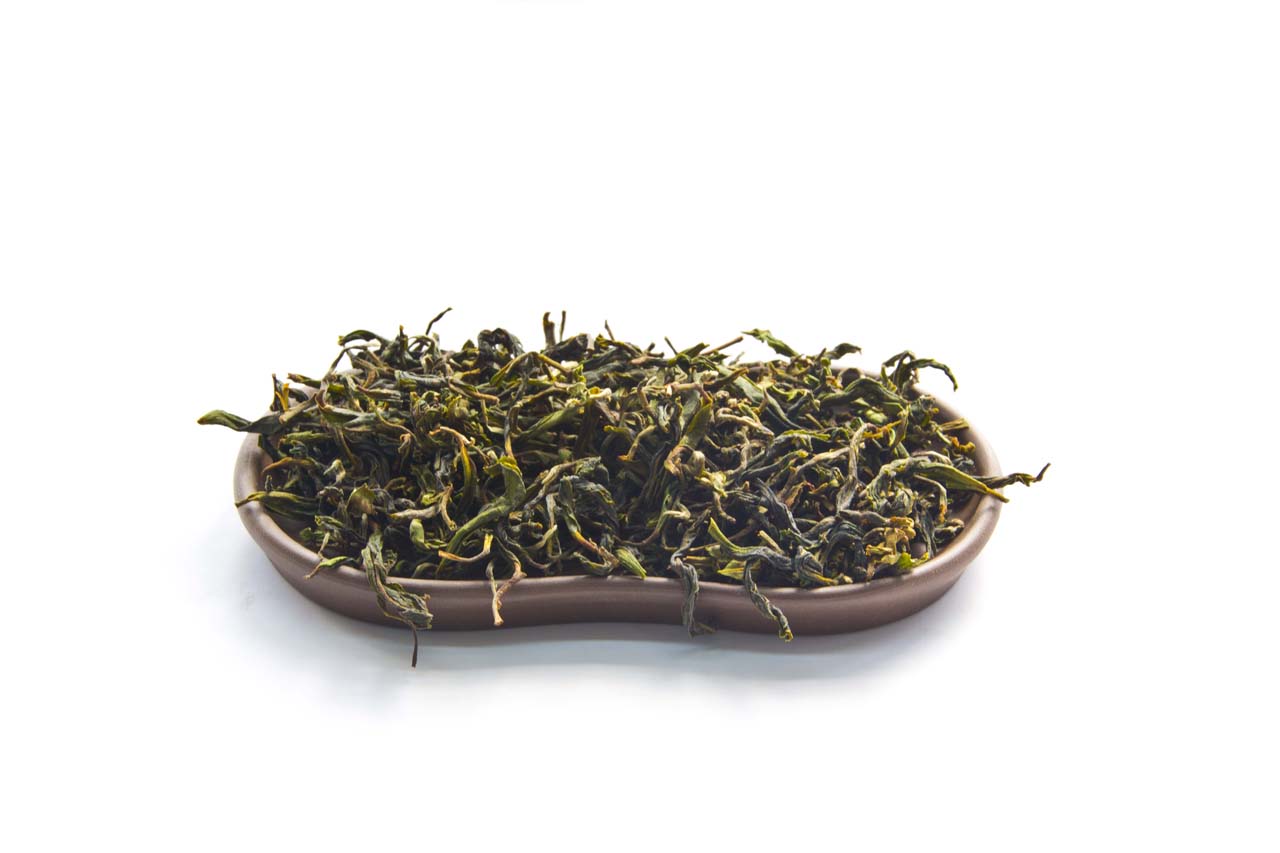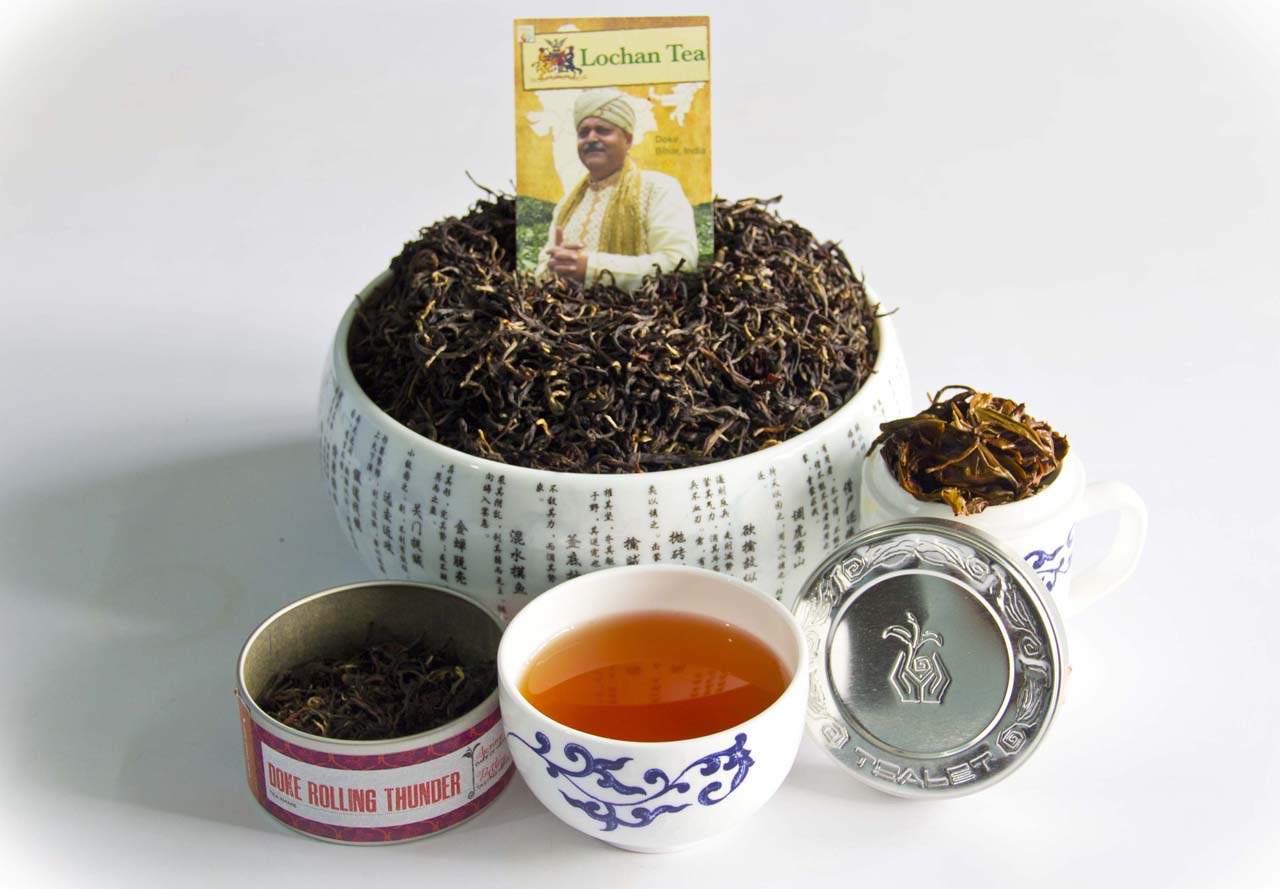 I still remember the first oolong I ever fell in love with. It was from Taiwan, a Dong Fang Mei Ren (or more commonly known as “Oriental Beauty”). Back then, I hadn’t realized oolongs could taste like anything other than…rocks. The fruit-smelling Formosa and a bit of gaiwan gongfu-ing changed all that. I was perfectly content to remain in my little Asian island comfort zone, but then I learned India was in the oolong game as well.
I still remember the first oolong I ever fell in love with. It was from Taiwan, a Dong Fang Mei Ren (or more commonly known as “Oriental Beauty”). Back then, I hadn’t realized oolongs could taste like anything other than…rocks. The fruit-smelling Formosa and a bit of gaiwan gongfu-ing changed all that. I was perfectly content to remain in my little Asian island comfort zone, but then I learned India was in the oolong game as well.
Five years ago – back in the early days of my tea reviewing – I ran across a tea dubbed “Tankha” from a small company. My tea-tasting prowess was still in its infancy, and I still had no taste for oolongs, nor had I developed a palate for Indian black teas. So, words like “Darjeeling” and “oolong” didn’t excite me. That particular one was okay. Not great, not bad – just okay. I quickly forgot about it.
In June of 2011, I was contacted via Twitter to review a now-defunct company’s products. At the time, I had just gone independent with my latest blog and hadn’t determined a focus yet. The company had an oolong from Darjeeling on their roster.
“Well, that’s odd,” I said to no one in particular.
By then, there were several Darjeelings notched on my palatial belt, many I considered favorites. I was ready to begin this oolong search anew. And with that tea – my seventh article ever on Steep Stories – my blog had a focus, and I had a mission. I sought out new and interesting teas with stories to tell.
While I never did discover the name of the Darjeeling estate that oolong hailed from, it did open up a new avenue of exploration. India was a big place with several different tea growing regions. I began to dig in with earnest.
I’ll break down the highlights of this “journey” according to region:
Darjeeling
 The first Indian tea growing region I fell in love with. Over the course of a year, I notched off at least four different estates that produced high quality oolongs. Phoobsering and Glenburn were tied for favorite. Then I ran across Castleton’s second flush Moonlight that September.
The first Indian tea growing region I fell in love with. Over the course of a year, I notched off at least four different estates that produced high quality oolongs. Phoobsering and Glenburn were tied for favorite. Then I ran across Castleton’s second flush Moonlight that September.
To say it changed my life would be an exaggeration, but it became the Litmus test for all oolongs then on. From ANY growing region – anywhere. Every year since 2011, I’ve made it a point to track down the latest batch of second flush Moonlight. Each time, it’s a new shade of perfection.
Nilgiri
In four years’ time, I’ve only run across two Nilgiri oolongs – one from the Dunsdale estate in the Blue Mountains, the other from…somewhere. (The vendor kept it a secret.) The Dunsdale one was pretty good, but it was more pekoe in presentation. If tasting it blind, I would’ve insisted I was sipping a black tea.
The second, mystery estate’s oolong – dubbed “Nilgiri Frost” – nearly caused my brain to explode. It was a note-perfect replica of a Chinese Dan Cong. Same tart profile and everything. I’m not sure how the estate managed it.
According to the vendor, the leaves were picked during the winter months when frost was still present. I think magical elves were involved. Yes, that is my scientific opinion!
Assam
It’s hard to find a tea in Assam that isn’t a black tea, but somehow I managed it. There’s this wacky place dubbed the Mothola estate that plays around with assamica leaves with interesting results. One of their wares happened to be an oolong. I ran into it completely by happenstance at a big tea chain, no less.
Unlike other oolongs from India (or anywhere else), the one I tried from Mothola was smoked over oak wood. That’s right; it went through a process similar to Lapsang Souchong. The result was like sipping heated whiskey. It was robust, peaty and brimming with…um…manliness.
To date, it is the only oolong coming out of Assam (as far as I know). And as far as I’m concerned, that’s fine. So long as I get more.
Bihar
 The Doke tea estate came to my attention via sheer peer pressure. A blogger friend from Australia kept singing its praises based upon the oolong and white tea they produced, and soon after others were echoing his opinion. The Lochan family name made it across my computer desk several times, but in 2012 two of their teas finally fell in my lap. One of them just happened to be Doke’s Rolling Thunder Oolong.
The Doke tea estate came to my attention via sheer peer pressure. A blogger friend from Australia kept singing its praises based upon the oolong and white tea they produced, and soon after others were echoing his opinion. The Lochan family name made it across my computer desk several times, but in 2012 two of their teas finally fell in my lap. One of them just happened to be Doke’s Rolling Thunder Oolong.
I enjoyed it immensely, but it was hard to pin down why I enjoyed it. Tasting notes eluded me. How could an oolong be malty like an Assam, fruity like a Darjeeling, and orange pekoe-ish like a Nilgiri? The terroir, the cultivars, and the processing methods all had something to do with it, I thought. But there was something else…
It didn’t occur to me until I was nearly done writing this. As I was on my final paragraphs, I had the splendid idea to brew up a mug of Doke Rolling Thunder 2013. The brew turned out perfect. Like, Castleton Moonlight perfect. I had played around with it several times prior – loved it every time – but this was the first perfect brew.
And that’s when it hit me.
India as a Whole
Tea evolves. Producers learn as they go – from season-to-season, from year-to-year, from generation-to-generation. Older, more established tea growing countries have had centuries to pin down what works and what doesn’t. India – while as ancient as any country out there – has only been at the tea growing game for a little under two hundred years.
Teas that Indian gardens produce vary from year to year. The formula may be the same, but several factors can tweak it. Doke is a relatively new garden in comparison to those of Darjeeling, Assam, or Nilgiri. The differences between what they produced in 2012 and 2013 were night and day. Both years were great, but 2013 was just better. And they’re still evolving.
Doke was a microcosm of India’s approach to tea. It was (and is) an ever-changing, ever-growing process. Tea evolves just as palates evolve. Oolong tea, by its very nature, embodies that.
In short, “You ain’t seen nothin’, yet.” I can get behind that philosophy. Now, if I can only convince the Lochans to smoke the Doke Rolling Thunder over oak wood, I’d be set for life.
